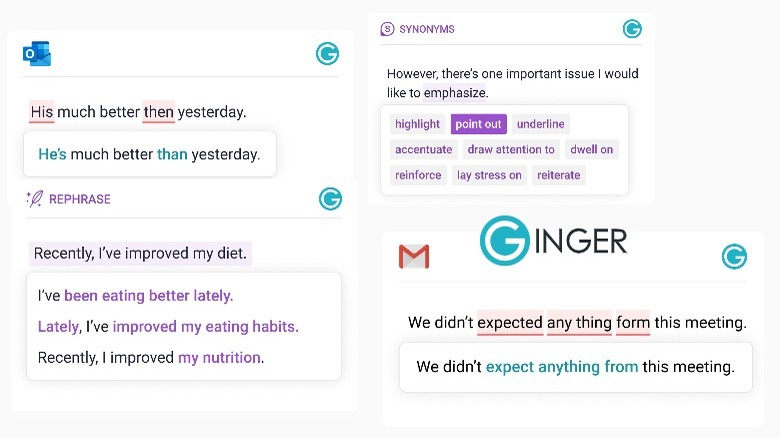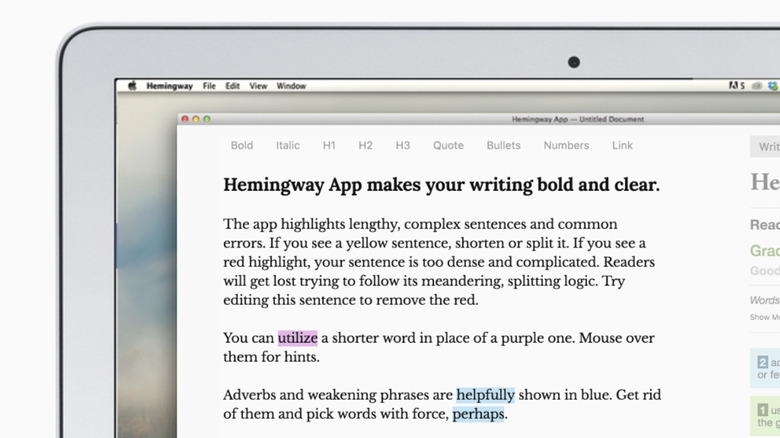5 Of The Best AI Tools For Proofreading Your Papers And Essays (That Aren't Grammarly)
Editing is a tedious job. Whether your medium lies in academic composition or presenting new ideas to your colleagues in the office, there will always be a need to create nuanced arguments that are backed by reason, fact, and research. To put these ideas together, there must be a meeting of two distinct skills: writing and editing. Anyone who has cobbled together a college essay knows that difficulties sometimes lie in reaching the word count, and other times it feels impossible to fit all of the necessary ideas into the word limit.
Proofreading is the other side of the coin, and this is where an essay or speech is honed with great precision to transform the rough lump of ideas into something with the clarity and focus required of a finished product. AI tools have been making headlines with their ability to create drafts in this creative process, and educators are worried that students will rely on AI systems to do their homework for them!
But there remain major differences between the flow that a human writer and an AI tool can achieve. A more interesting use for AI systems is in the proofreading and editing stage. Writers can become numb to the issues embedded within their own writing, especially if they've edited the content numerous times already. Unfortunately, the most widely used platform, Grammarly, remains unable to meet the needs of every user, but there are some solid alternatives that can act as potent partners in your writing process.
ProWritingAid
ProWritingAid is one of the more comprehensive AI editing tools on the market. The AI offers in-depth writing reports on the text that it proofreads, offering 20 different metrics to help improve a writer's natural flow without overburdening them. ProWritingAid's reports cover style, cliché usage, thesaurus options, transitions, alliteration and diction style, and plagiarism checks, to name a few. These are useful tools that can help writers eliminate the passive voice from their writing (or focus on it during certain passages that might warrant this tone shift).
The tool allows users to set customized rules and stylistic preferences that are ideal for writers working within preferred layouts from organizational or academic guidelines alike. Users will also gain access to data products that help them understand their sentence structure, readability scores, and much more. ProWritingAid can be integrated directly into a variety of writing platforms, as well. Users will find that it works with Microsoft Word, Scrivener, and other systems. It can also be incorporated as a browser extension for Chrome, Firefox, Safari, and Microsoft's Edge browser. This gives writers the ability to utilize ProWritingAid's toolbox of proofreading reports and text editing functions in virtually any typing environment, including Outlook, Medium, Facebook, and elsewhere.
The app, like Grammarly, is cloud-based. Therefore, it requires an active internet connection to provide editorial assistance. The free version allows for thesaurus suggestions, grammar, and other proofreading coverage, while the paid subscription unlocks the whole catalog of tools for $10 per month. As well, students can take advantage of a 20% discount directly on the website.
QuillBot
QuillBot is an online proofreading tool that lives in your browser or Microsoft Word application. The tool can be used with Chrome, Word, and Google Docs applications. For this reason, it's a bit less versatile than other options on this list, but will still cover most writing applications that users will encounter — granted they use Google Chrome as their primary web browser.
The tool can be used to check grammar, summarize input text from the internet, build citations, paraphrase content, and check for plagiarism. QuillBot also offers a feature called "Co-Writer" that allows you to seamlessly integrate all of these tools directly into your writing process. This can dramatically improve the writing product and pace of content synthesis in even the least confident or motivated writers. The tool can be used in a free format or with a paid subscription (as low as $8.33 per month with the annual payment option).
With a free account, you'll gain access to the grammar and spelling check tools, as well as a taste of the paraphrasing and summarization functions. This gives low-frequency users a potent tool to assist them in their writing tasks. Premium users are able to use the paraphraser without limits and gain access to advanced grammar rewrites, fast processing speeds, the tone detector, and plagiarism checker, along with the entire suite of tools.
Ginger Software
Ginger is an AI toolbox that can help writers enhance their creativity while ensuring that grammatical flourishes and spelling issues don't get overlooked. Ginger can help proofread text for mistakes and comb through sentence structure, but it also offers creative alternatives to flagging passages that you may not be entirely happy with. The AI can offer a range of options that may make your writing more endearing to the reader. The tool may be particularly valuable for writers who often find themselves getting bogged down in the weeds and writing sentences that ramble on.
The Ginger AI tool can also offer a raft of synonyms. The AI can be downloaded to your Android device or iPhone, installed as an app on your Windows machine, or added as an extension to Chrome or Microsoft Office apps. Ginger also provides a translation service built into the system, with coverage of over 40 languages. This feature sets Ginger apart from many other AI proofreading tools because it adds a unique, additional layer of functionality that can be immensely helpful in the modern, digitally interconnected world we inhabit. Users can interact with the free version, or pay for the enhanced, premium plan starting at $4.99 per month (billed as a $120 payment for a two-year subscription).
Hemingway Editor
The Hemingway Editor is a minimalistic tool designed to help writers improve the style and pacing of their writing without throwing curveballs at the reader. The AI's objective is to give writers a Hemingway-esque treatment for their content. Hemingway was a famously direct writer and is even (mis)attributed as pioneering the six-word novel on a bet. The AI, therefore, is focused on clarity and precision rather than flashy substance and flowery language.
The AI toolbox highlights improvements that can be made throughout a piece of text that's been input into the AI's system. Color coding is used to quickly and accurately signal the types of linguistic changes that a writer might want to consider. Yellow highlights tell the writer that a sentence is likely too long, while blue words are those that don't convey a strong meaning and may benefit from replacement or omission.
There isn't a browser extension but the online tool is free to use while the Hemingway app is downloadable for use offline and costs $19.99 to purchase. Either version is a good option for a writer seeking proofreading assistance while aiming to keep their prose clear and direct above all else.
Slick Write
The AI proofreader Slick Write is a no-frills, free-to-use editor that you can add as a browser extension to Chrome or Firefox. The tool is great for those seeking a grammar and syntax checker that can handle virtually any size input. There's a 30,000-word cap on submissions to the editor interface, but those who are working on a book, for instance, can utilize multiple uploads to evaluate a larger total volume of text. Slick Write doesn't include all the bells and whistles that would be found in a paid AI proofreader, however, when it comes to the editing job it does provide, the AI is up to the challenge.
This makes it a good option for those seeking a simple AI editor that can assist them in developing content without a lot of additional hoops to jump through. The tool can weed out words that are commonly confused and filter words or other padding. It's also particularly adept at uncovering legalese jargon that may not fit with your intended style.





